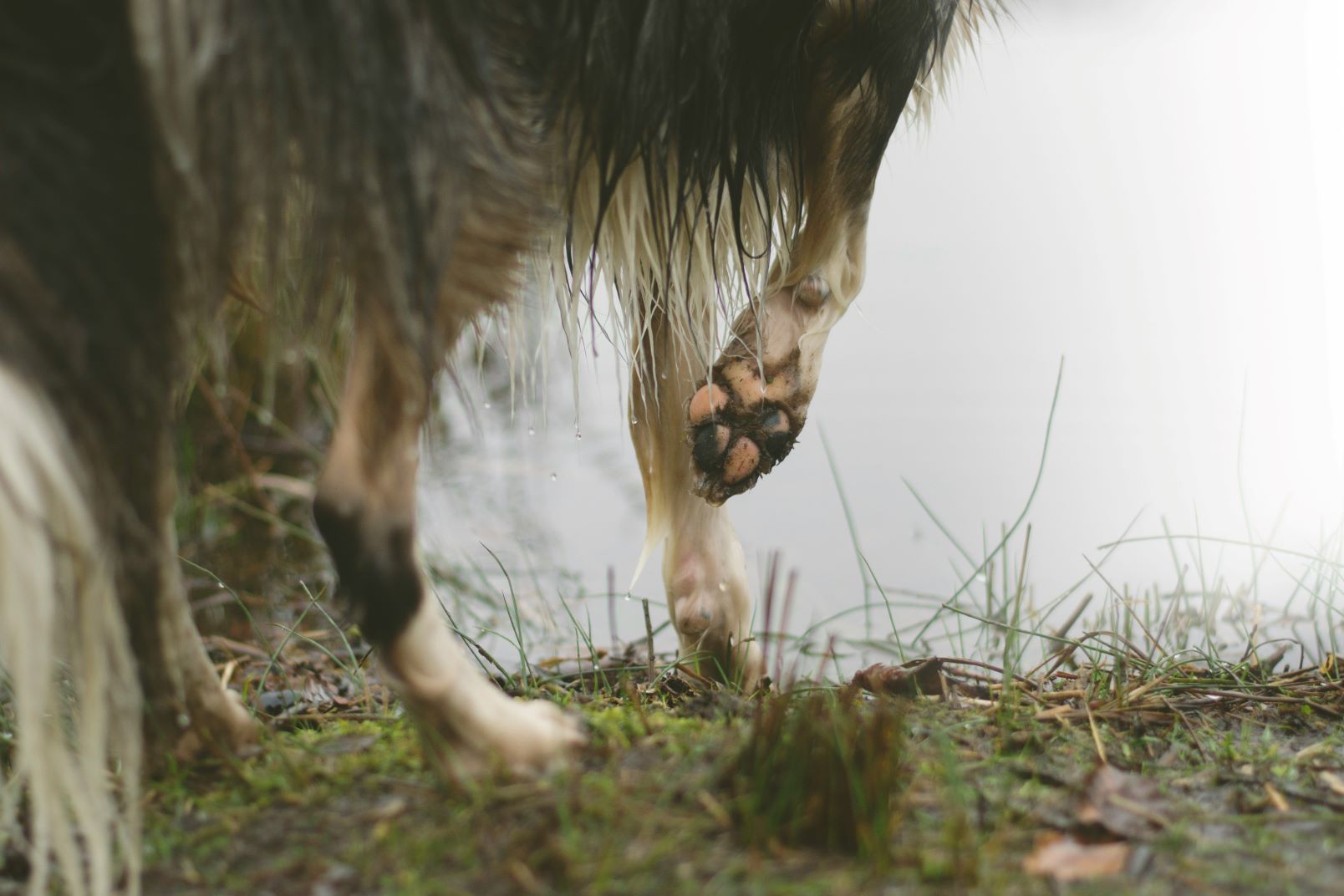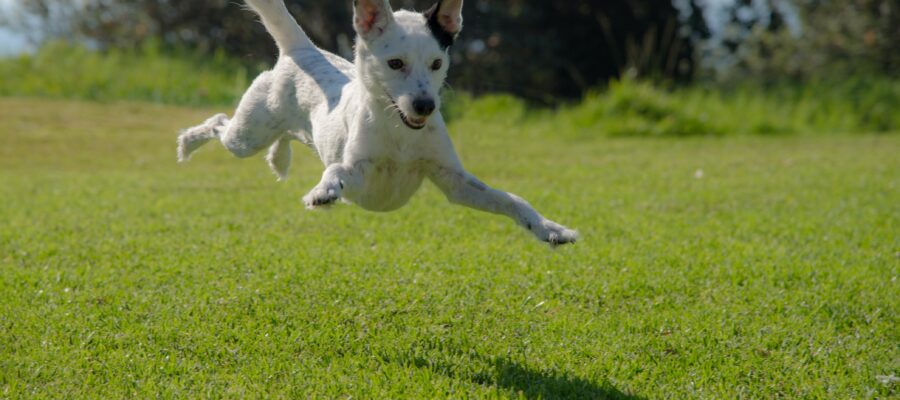
From Discomfort to Playfulness: The Many Reasons Dogs Lift Their Paws
If you’ve ever noticed your dog raising a paw mid-walk, you might be wondering what they’re trying to tell you. This seemingly simple gesture can have a surprising range of meanings, from a sign of pain or anxiety to a playful invitation. Let’s unravel the mystery behind the lifted paw and explore the various reasons why our four-legged friends engage in this behavior.
Paw Discomfort or Injury: The Urgent Signals
One of the most important reasons to pay attention to paw raising is to rule out any discomfort or injuries. Here’s what to watch out for:
- Painful Paws: If your dog consistently lifts the same paw, carefully examine it for any cuts, thorns, insect stings, or trapped objects between the pads. Hot or cold surfaces can also cause discomfort. Consider protective booties if this is a recurring issue.
- Limping: Limping along with paw raising is a strong indicator of pain. A sprained paw, broken nail, or a more serious joint issue could be causing the issue. A vet checkup is crucial.
- Sudden Onset: If your dog never showed this behavior before and suddenly starts paw raising, it warrants attention. It could signal the beginning of an injury or an arthritic flare-up.
Environmental Factors: It’s Not Always About Them
Sometimes, the issue lies in the outside world rather than your dog’s paws themselves. Look out for these factors:
- Extreme Temperatures: Hot pavement can burn delicate paws, and snow or ice can cause discomfort or frostbite. A raised paw is a way of saying, “Ouch, this hurts!”, read more on protecting dogs’ paws in various weather conditions, like this one from the ASPCA.
- Irritants and Allergies: Grass, pollen, certain cleaning products, or road salt can irritate a dog’s paws. Licking and paw raising could signal itchy, uncomfortable feet.
- Something’s Stuck: Long-haired breeds can get burrs or small objects stuck in the fur around their paws. Regular grooming and paw checks can prevent this issue,
Anxiety and Stress: When Emotions Speak
Paw raising can be a sign of a dog experiencing stress or anxiety. Look for other body language cues:
- Pacing or Restlessness: Anxious dogs might pace around while lifting their paws, unable to settle down.
- Ears Back, Tail Tucked: These are classic signs of anxiety or fear in dogs.
- Environmental Triggers: Identify potential stressors, such as loud noises, unfamiliar places, or separation from you, that might correlate with paw raising.
Playfulness and Learned Behaviors: The Paw of Many Meanings
Paw raising isn’t always a sign of distress. It can also be a form of playful communication or a learned trick.
- The Play Bow: Many dogs raise a paw as part of the classic “play bow” invitation. If your dog is alert, has playful eyes, and a bouncy demeanor, it’s likely a gesture of pure excitement.
- Requesting Attention: Some dogs learn that raising a paw gets them attention, pets, or even treats. While cute, reinforce alternative behaviors for requesting attention politely.
- Learned Tricks: “High five” and “Shake” are tricks that involve paw raising. If your dog offers a paw in a seemingly random context, they might be seeking to play a game!
Breed Specific: The Pointer in Your Pup
Certain dog breeds, particularly hunting breeds, instinctively raise a paw when they detect a scent or spot potential prey. Pointers, Setters, and Retrievers are famous for this “pointing” behavior. Even if your dog isn’t a hunting breed, they may retain some of those instincts.
What Should You Do?
Context is everything when deciphering the reason behind your dog’s paw raising:
- Observe Carefully: Pay attention to other body language signals, the environment, and any preceding situations.
- Rule Out Discomfort: Examine your dog’s paws carefully and consult your veterinarian if you notice an injury or medical issue.
- Address Environmental Factors: Protect their paws from hot or cold surfaces, remove irritants, and practice good grooming.
- Manage Anxiety: If your dog shows signs of anxiety, work on identifying triggers and use calming techniques, behavior modification, or consult a veterinary behaviorist for help.
- Encourage Positive Behavior: Reinforce calm behavior and alternative ways for your dog to ask for attention when they need it.
When to Consult Your Veterinarian
Don’t hesitate to seek veterinary advice if:
- There’s a Change in Behavior: If the paw raising is new, persistent, or accompanied by a clear change in your dog’s usual demeanor.
- Injury Is Suspected: Limping, open wounds, or consistent favoring of one paw warrant professional evaluation.
- Anxiety Is Severe: If signs of anxiety are interfering with your dog’s daily life and well-being, a veterinarian can help create a treatment plan.
Helping Your Dog Put Their Best Paw Forward
By paying attention to this simple gesture and addressing the underlying causes, you can help your dog feel more comfortable, secure, and playful on their walks. Here are some additional tips:
- Regular Paw Checks: Make a habit of examining paws after each walk and as part of grooming routines to catch problems early.
- Paw Products: Consider paw balm for dryness, booties for protection, and allergy wipes if environmental irritants are an issue.
- Positive Reinforcement: Reward calm behavior during walks and when examining paws, making them positive experiences.
The Takeaway
The next time you see your furry friend raise a paw, remember there’s a whole story behind it. From pain and environmental triggers to playfulness and learned behaviors, understanding those reasons will strengthen your bond and ensure your dog enjoys every walk to the fullest.






